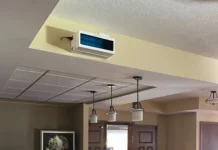Isabel “Izzy” Medeiros
MS Student, Civil and Environmental Engineering, University of New Hampshire
izzy.medeiros@unh.edu
James P. Malley Jr., Ph.D.
Editor-in-Chief, UV Solutions and Professor of Civil and Environmental Engineering, University of New Hampshire
jim.malley@unh.edu
Owners and operators of UV technology are an important stakeholder group. These professionals have limited time and often prefer to remain anonymous when providing feedback. As a result, UV Solutions builds this column from responses to a Qualtrics survey sent out each quarter with the help of University of New Hampshire graduate students.
This month, in keeping with the growing interests in the use of UV systems for surface or air disinfection, the Qualtrics survey was sent to providers of these types of equipment since most of them, when installed, either do not have an operator or the owner/operator is difficult to identify. This market often uses the term germicidal UV (GUV), so that acronym is used throughout this column. The authors thank the IUVA buyers guide participants, ASHRAE, NACAA and APIC for recommending email addresses for this poll. This broad solicitation resulted in 33 contacts and 21 responses.
Has there been an increase in GUV devices being sold for air disinfection?
Ten responses indicated that there was a significant increase in inquiries related to using GUV devices for upper-room air systems and HVAC systems. Three other respondents indicated that a marked increase in interest in Far UV (also termed Far UV-C or UV@222 nm) has been seen in the past 12 months. Ten respondents also mentioned that customers were seeking more sustainable GUV options and UV LED information to eliminate mercury.
Interestingly, 90% of the respondents indicated that the actual increase in sales was far less than expected and mentioned factors such as the economy, inflation, work-force issues and supply-chain issues. Two respondents indicated that their growth has been with large entities seeking pilot programs such as: healthcare facilities for the aged in Australia, US military installations and their contractors and a few large hospital corporations – but their consumer market growth has been flat after an increase during the peak of the COVID-19 pandemic.
Have you seen an increase in GUV devices being sold for surface disinfection?
Twelve responses indicated that there really is no agreement on the use of the term “surface disinfection,” which they viewed as a more of a scientific research term. Two suggested asking specific questions about product categories, such as disinfection of cell phones or disinfection of food processing equipment or packaging.
Fifty percent of the responses indicated interest and inquiries had increased at tradeshows, but sales were flat in the two years after COVID-19. One respondent noted that a change in its branding and marketing – specifically, to emphasize sustainable systems that are mercury-free, energy-efficient and have significantly longer lifespans – resulted in a 15% increase in product sales to consumers during the first three quarters of 2024.
What typical questions are asked by potential buyers of GUV products?
All respondents noted there are very few specific questions from consumer sales, and that these sales entirely are driven by price and customer comments provided on platforms such as Amazon, Walmart, eBay and Alibaba, where customers rate the products. Four companies involved in large commercial sales of GUV treatment for air were asked about purchase prices, annual operating costs, product certifications and guarantees. Ten respondents indicated, in one form or another, nearly half of their customers wanted to know how they can determine if the device was functioning or had stopped working. Three respondents mentioned receiving questions about their product-testing methods and whether they had independent third-party documentation to verify those methods. One comment from a provider that serves five large customers indicated that the customers have asked if there were specific federal and state laws with which these devices must comply, and whether they meet OSHA and California standards.
If devices have been returned by the customers, what reasons were given?
No specific responses to this question were provided. One response suggested searching customer comments on online sales platforms might provide some information. For a myriad of reasons, the online reviews – which likely number in the tens of thousands across different products – are not reviewed here since it is not possible to determine their source, nor their validity. Additionally, these reviews tend to skew toward the positive, since few bother to admit buyer’s remorse, or the very negative, which may represent outlier situations.
Are there other comments to share with UV Solutions’ readers?
One comment was provided that the recent decision in California to withdraw the Senate bill regulating UV devices was beneficial for GUV consumer-sales growth and suggested that associations promoting disinfection of air and surfaces need to increase their efforts to promote the benefits of GUV to public and private organizations and to regulators. Two respondents indicated they were encouraged by ASHRAE 241 recognizing the value of GUV but have not seen a significant boost in sales since it was released. Four responses urged IUVA to increase its education and influencing of government officials and key decisionmakers responsible for disease control in healthcare facilities, schools, nursing homes and food providers throughout North America to promote the use of GUV.






